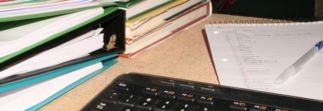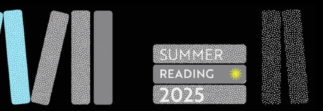 For this year’s International Open Access Week, we’re thinking about “open” more broadly than OA policies and articles: There’s an increasing urgency to do so when it comes to working on some of the world’s most pressing problems, like Covid-19 or climate change.
For this year’s International Open Access Week, we’re thinking about “open” more broadly than OA policies and articles: There’s an increasing urgency to do so when it comes to working on some of the world’s most pressing problems, like Covid-19 or climate change.
The 2022 OA Week theme is Open for Climate Justice, a recognition that the effects of climate change are felt more by the world’s poor and vulnerable, and that sharing knowledge and information openly and in collaboration with communities beyond scientific specialists must happen in order to prepare for the future.
MIT’s Equitable Resilience Framework (ERF), a toolkit for policymakers, makes equity, justice, and community input a fundamental part of problem solving around climate change. The ERF, created by researchers in the Norman B. Leventhal Center for Advanced Urbanism, was an MIT Climate Grand Challenges finalist. It now involves a team from across the School of Architecture – as well as researchers and communities around the world – and is led by Janelle Knox-Hayes, an associate professor in the Department of Urban Studies and Planning and director of MIT’s Resilient Communities Lab.
We spoke to Knox-Hayes and her colleague Sarah Williams, associate professor of urban planning and the director of the Civic Data Design Lab, about climate justice and the ERF.
Q: The OA week theme is “climate justice.” What does climate justice mean in the Equitable Resilience Framework?
Janelle Knox-Hayes: How do we create solutions to climate change that will be more equitable and just in the long term? What we’re seeing is that the communities most deeply impacted are the most vulnerable. And then a number of solutions are required, and the creation of infrastructure and urban planning have the potential to exacerbate inequalities.
With the Equitable Resilience Framework (ERF) it’s not just a challenge but an opportunity to rethink planning and design as we’re confronting climate change. The justice element of that is to think about, What is this planning? What does the long-term look like from the standpoint of communities being affected, and how do we bring them into the solutions?
Q: One of the pillars or approaches of the ERF is “knowledge convergence,” which addresses how the most common outputs of scientific knowledge, like scholarly articles, aren’t necessarily accessible to or usable by non-specialists. Can you talk about what successful knowledge convergence looks like?
Janelle Knox-Hayes: Part of the challenge with communicating climate change effectively is that the science isn’t reaching populations in the way that it needs to. When we use terms like “two degrees Celsius change” or “450 parts per million” – if you have a scientific background these might make sense. But trying to assess and understand climate change from those rubrics doesn’t work well for most people, because there’s no meaning, no felt impact, behind it.
And so what we can do is broaden the approach of the science so that it has a better felt impact. Sarah [Williams] and others involved with ERF do really amazing work with data visualization, using narrative, using art and other forms to really communicate the science. There’s a power in that.
The other piece of the convergence is this idea that planning and design is too often top-down, that the scientist or the researcher or even the state official has a level of authority above that which the community brings.
What we’re trying to do with ERF is level that distinction. The knowledge that communities bring is also critical and is a really important piece of the puzzle. So how do we create a framework and a process that allows communities or Tribes with Traditional Ecological Knowledge to bring that sense of climate change into the dialogue such that assessments are made together from both sides, rather than in a unilateral or universal direction.
Sarah Williams: We want to make the data behind climate change and its effect on communities more accessible to the public at large so they can internalize and take action with it.
Related to that: How do we give policymakers access to that data so they can make better decisions? We often think policymakers have data at their fingertips and that they use that data to make the right decisions. But actually that needs to strategically happen, and we need to help give policymakers the data they need in ways they can consume. This is true for communities too. If they can understand impacts, day to day, of different kinds of changes in our environment, they can also advocate for what they need more.
Q: How can indigenous knowledge and scientific knowledge work together?
Janelle Knox-Hayes: Within Traditional Ecological Knowledge there’s a sense of the relationality of human and natural systems and a realization that a lot of that knowledge isn’t individual, it’s community, it’s social, and as a consequence it has a greater temporal depth to it.
The way the Tribes we work with conceptualize their experience with the natural environment is generational, it’s understanding what their grandparents lived with and a sense of what the natural environment is going to look like for their children. So I think there’s a lot of deep knowledge in those communities about how to understand flux and change but also how to prioritize different aspects of the environment that are critical to the survival and wellbeing of the community.
We see it in the Tribes that we work with, but it’s also deeply rooted in other localized communities that have been rooted in a specific place for generations. They understand through their observations how species are moving, how water is changing the coastal landscape. There’s a deep sense in those communities of the natural environment that can be woven together with more conventional means of assessing, like mapping, and understanding how sea-level rise is creating vulnerabilities for specific communities.
We have examples of projects where that has been done very effectively. We have a colleague with the Louisiana Sea Grant, Matt Bethel, who did some tremendous work with tribes in Louisiana as sea-level rise and land subsidence has been overtaking lowlands like Isle de Jean Charles. He has helped the Tribes communicate their traditional knowledge of the landscape into a format that could be mapped with policymakers, so that everyone could look at both forms of data together: the Traditional Ecological Knowledge about what was happening with the landscape and then a mapped GIS version of it that could be communicated and used in meetings and decision making.
Q: Tell us about a project you’re currently working on.
Sarah Williams: Right now, I’m working with research associates Daniela Coray and Niko McGlashan, along with other researchers at the LCAU, with an organization in New York City called Transportation Alternatives. We’re creating what we call a spatial equity index, which is a tool that looks at different kinds of equity issues within NYC.
The tool was developed for policymakers to see how well their community is doing vis-à-vis other communities in the city. They often ask for data but don’t know how to use it, so here we’re opening data up for them to make better decisions for their communities. Then, how can they then turn that data into some kind of action? What are some of the things they can do to change, say, the fact that their community has a higher heat index and the kinds of issues that are involved in that?
We released the tool on October 18 at City Hall in New York. It’s meant for city councilmen to say, Hey! This is where we’re not performing as well and here are the things we can do to help.

